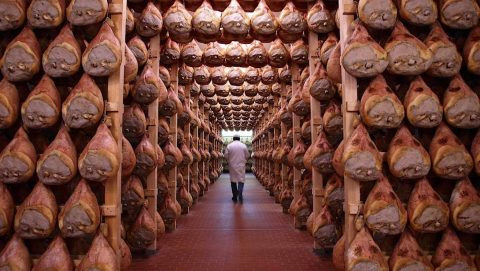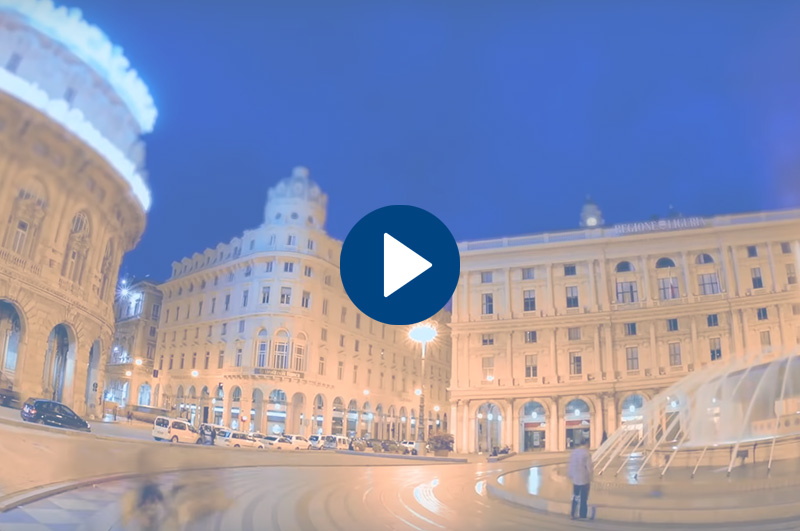9-day BOTTICELLI PRIVATE TOUR
Milan, Venice, Florence and Cinque Terre
HIGHLIGHTS
- Milan, the 2,000-years-old trendy capital of Northern Italy
- Verona, the city of lovers
- Venice, when wealthy merchants ruled the Mediterranean
- Florence, an open-air museum
- Siena and San Gimignano, power in the Middle Ages
- Pisa, how can it stand?
- Cinque Terre, the stunning 5 villages perched on the rocks
- Parma, the art of food
WHAT'S INCLUDED:
Accommodations in Double Room with Continental Breakfast (*):
- Day 1: 3* to 5* Hotel in Verona city centre
- Days 2 & 3: 3* to 5* Hotel in Venice city centre
- Days 4 to 6: 3* to 5* Hotel in Florence city centre
- Day 7: 3* to 5* Hotel in Cinque Terre area
- Day 8: 3* to 5* Hotel in Parma area
- Day 9: 3* to 5* Hotel in Milan city centre
(*) The Hotel list is available upon request
Transfers (**):
- Day 1: Transfer to your accommodation in Verona city centre
- Day 2: Transfer to Venice Pier – Stopover in Valpolicella area - Transfer by private water cab to your accommodation in Venice
- Day 4: Transfer by private water cab to Venice Pier + Transfer to your accommodation in Florence – Stopover in Maranello
- Day 7: Transfer to your accommodation in Cinque Terre – Stopover in Pisa
- Day 8: Transfer to your accommodation in Parma area
(**)All transfers by private car (2 pax)/ minivan (3 to 6 pax)/ minibus (7 to 10 pax)
Private Guided Visits / Tours (***) / Activities:
- Day 1: 3-hour private walking tour of Milan city centre with an Authorised Tourist Guide
- Day 2: Visit of a local wine cellar with tasting
- Day 3: 3-hour private walking tour of Venice city centre with an Authorised Tourist Guide – Half-hour gondola ride
- Day 5: 3-hour private walking tour of Florence city centre with an Authorised Tourist Guide
- Day 6: Full-day excursion to Siena and San Gimignano
- Day 8: Full-day excursion by Shuttle Train in Cinque Terre area
- Day 9: Full-day excursion of Parma area with an Authorised Tourist Guide- Visits to a Parmesan Cheese factory, a Parma ham factory - Drop off at your accommodation in Milan
(***)All tours by private car (2 pax)/ minivan (3 to 6 pax)/ minibus (7 to 10 pax)
Admission Tickets to:
- Duomo Cathedral in Milan
- Saint Mark’s Basilica in Venice
- Palazzo Ducale in Venice
- Museo Ferrari in Maranello
- Galleria dell’Accademia in Florence
- Duomo Cathedral in Siena
- Leaning Tower in Pisa
Full emergency assistance 24 hours/day by our Back Office
List of recommended restaurants and deli shops along the itinerary
All taxes
Options:
- Pick up at Milan Airport / Railway Station at the start of the tour
- Accommodation in Milan the night before the start of the tour
- Drop off at Milan Airport / Railway Station at the end of the tour
- Other options upon request
DAY 1 - MILAN
Benvenuti in Italia, welcome to Italy.
Milan is, first of all, the Fashion Capital of Italy! The showrooms of all Italian manufacturers are located in the city, and here buyers from worldwide distribution find the one and only “Italian Style”! But Milan is not only fashion, it is also and above all art, beauty and culture! Piazza del Duomo is the geographical and historical centre of the city. Palaces surround it with arcades; in the middle, you can see the Duomo, one of Europe’s biggest Gothic cathedrals, whose construction started in the 14th and ended in the 20th century. And on the Gran Guglia, the cathedral’s highest spire, the Madonnina, a symbol of Milan, stands. On the left of the square, the 19th-century Galleria Vittorio Emanuele II links the grand Piazza del Duomo with Piazza della Scala, featuring mosaics and a wrought iron and glass roof.
Then stroll down the streets of “Quadrilatero D’Oro”, the heart of the fashion industry, admiring the shop windows of Prada, Armani, Versace, Ferragamo, Dolce & Gabbana and Valentino. The multi-concept store by Giorgio Armani, Spazio Armani, in the elegant Via Manzoni, extends for 6,000 square meters and offers fashion showrooms, furniture, flowers and hi-tech Sony equipment. After shopping, enjoy an aperitif or a coffee at the Emporio Armani Cafè upstairs or book a table at the Japanese restaurant Nobu. Or taste a gorgeous Cappuccino at Pasticceria Cova, as locals often do in via Montenapoleone, “Montenapo” for the Milanese!
At dinner, what about a tasty yellow “Risotto alla Milanese”? According to an ancient tradition, the Duomo is where Risotto alla Milanese was “born”, invented by a boy who worked for the stained glass artist Valerio di Fiandra, nicknamed “Zafferano” for its habit of adding spices to his colours. One day, he also put some saffron in the rice, and the result was a great success!

DAY 2 – VERONA
In a stretch of land designed in accord with the bends and twists of the River Adige, we find Verona, a visually stunning city of excellence. It is a city of many faces whose history can also summarize Italy's history – think of the works left by the Romans, the Medieval streets and the “palazzi” of the Renaissance.
The city’s commercial hub is Piazza delle Erbe, where the original Roman Forum was. This piazza represents the synthesis of several different historical moments: the 13th-century buildings – among which Casa dei Mercanti (House of Merchants) stands out - the painted facades of the Mazzanti Houses and the Madonna Verona Fountain, with its central statue from the Roman Epoch. Also dating back to Roman times is the most symbolic monument of Verona, the Arena (1st century B.C.). Originally constructed to host gladiator combats, it saw a long period of abandonment before it returned to the limelight with a new form of entertainment in 1913: after having hosted the premiere of Aida in that year, it has been known around the world for the sounds of opera that emanate from its stage.
Then, Romanesque Verona lies in its imposing Duomo, as well as in the Cathedral of St. Zeno, and in Castelvecchio, which looks out from the banks of the Adige; it symbolizes the Medieval power of the Scaliger family, to whom the realization of the crenellated Scaliger Bridge is attributed.
The palazzi of Verona narrate its long history of wealth and power. In Piazza dei Signori - which sits under the dominating Lamberti Towers - the portico of the Loggia del Consiglio catches the eye; in the 16th century, political life took place here, while the Palazzo di Cansignorio and Palazzo del Comune (or “della Ragione”) were the seats of military, judicial and administrative power. Nearby lie the Scaliger Arches, in the same-named piazza, and some of the most suggestive views of the city, including glimpses of the monumental tombs of the Lords of Verona.
Finally, the Verona of Shakespeare and the “star-crossed lovers” is a worldwide legend and lives indefinitely through the places made famous in Romeo and Juliet. Yet the original literary work was created by Luigi da Porto, a writer from Vicenza, in the 1500s; it eventually circulated in Europe, reaching England. It was the Bard who rendered it the immortal story it is today, allowing Verona to rest as one of the most admired and visited places in the world.
And remember: Verona is a very elegant city, famous for its classy shops!
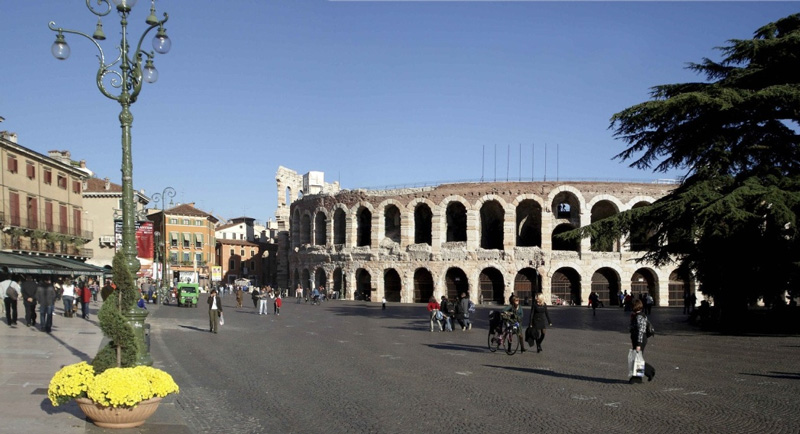
DAY 3 – VENICE
Welcome to the “unique” Venice, the “city on the lagoon”! You will be astonished by its beauty and charm!
You will start your visit with Piazza San Marco (St. Mark’s Square) and the Basilica interior, a 900-year-old marvel of architecture! The church is unique in Italy for its golden Byzantine and Medieval mosaics, intricate stone and marble traceries and exuberant Middle Eastern domes. Near St. Mark’s Basilica is Palazzo Ducale, the most impressive secular building in Venice and once the official residence of the supreme authority of Venice, the “Doge”. A masterpiece of Gothic architecture, the Doge’s Palace is an impressive structure composed of layers of building elements and ornamentation, from its 14th and 15th-century original foundations to the significant Renaissance and opulent Mannerist adjunctions.
Then, you may visit Santa Maria Gloriosa dei Frari (Saint Mary’s of Friars), striking for its colossal size and the quality of its works of art, including masterpieces by Titian, Giovanni Bellini and Donatello, and several splendid tombs. Also, you may explore the streets and savour everyday life in an intricate maze of ancient narrow alleyways, lively squares with magnificent buildings and meandering canals, and finally, walk on the Rialto Bridge, Venice’s busy "heart". Last but not least, you will enjoy a Gondola ride on the city’s canals: a jump back in time when Venetians moved only on the water.
At lunch, you may savour Venice’s finger food, the famous "cicheti”. There is tremendous variety, and options include anything from simple cheese or salami to almost any kind of seafood, fried and grilled vegetables, sweet and sour sardines, creamy codfish and much more!
Rich in traditions, Venice offers a wide selection of unique artisan products. In the city of the Italian carnival, the typical Venetian masks are a must. The cost of the original ones is relatively high, but it is really worth it! Also, don’t miss an authentic Murano glass object: each product is made and painted by hand, but be sure you buy an original product from Murano, guaranteed by a label or a signature (and the seller), not a Chinese copy!
Finally, at dinner, you will be delighted by the flavours of the regional cuisine of Veneto, boasting delicious recipes such as “Sarde in saor” (marinated sardines), Risotto with seafood, or the typical “Baccala' mantecato”, to finish with a fantastic “Bussolà”, the ring-shaped and cinnamon-flavoured cake! (read more about Venetian cuisine in our BLOG).

DAY 4 – STRÀ and MARANELLO
Today you will reach the Brenta river, a direct waterway connecting the Venetian Lagoon with Padua. The two shores of the river are still animated by many attractive sites, like fancy villas, small towns and green areas.
As you approach the small town of Strà, you’ll see a long wall with wrought iron gates and a neoclassic-style façade. Here you are in Villa Pisani, once the luxury dwelling of the Pisani, one of the most powerful Venetian families in the 18th century. The building of Villa Pisani consisted of 114 rooms in honour of Alvise, the 114th Doge of Venice, and the most celebrated Venetian painters were commissioned to decorate the interiors. Also, the park is worth visiting for a pleasant walk through the Labyrinth, the elegant Coffee House, the original Stables and the 20th-century straight basin.
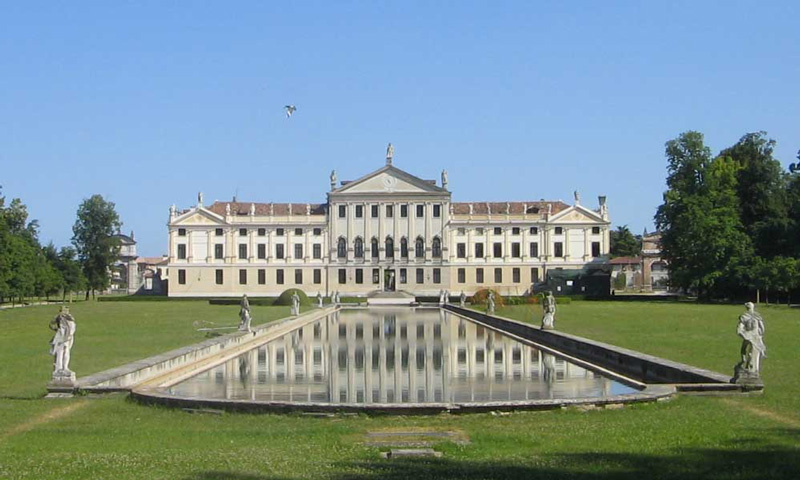
Modena is renowned worldwide for the famous people - Enzo Ferrari and Luciano Pavarotti above all - who were born and lived here, and for some of its gastronomical products. The city is the capital of the so-called “Motor Valley”: actually, the factories of the famous Italian sports car makers Ferrari, De Tomaso, Lamborghini and Maserati are located here.
The city of Modena hosts little jewels of art, such as the Romanesque Cathedral, wholly constructed with white marble and located in the heart of Modena, in Piazza Grande. The Piazza with the Cathedral and the Ghirlandina Tower is one of the 48 Italian sites on the UNESCO World Heritage List. The Ghirlandina, the bell tower rising majestically over the rooftops, derives from its marble balustrades around the steeple, suggesting the lightness of garlands.
In Maranello, you may visit Museo Ferrari, not just a collection of the past but an extraordinary experience of the world of Ferrari and sports car racing! How exciting to see the most beautiful cars in the world, exceptional artworks made by modern mechanic artisan masters.
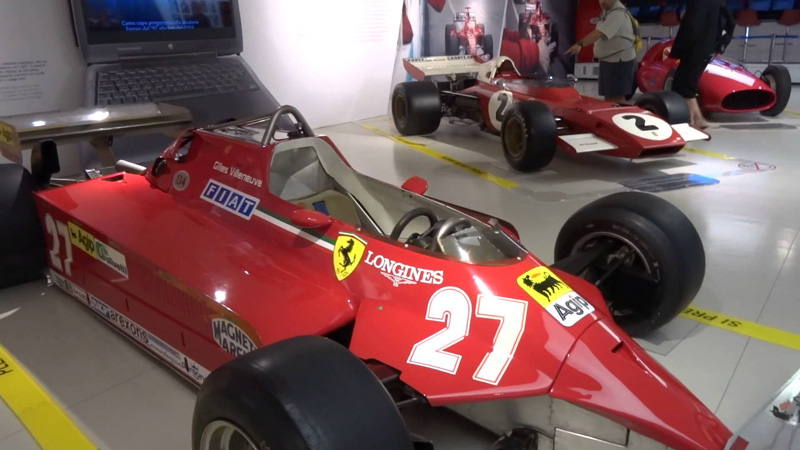
DAY 5 – FLORENCE
Welcome to Florence, the land of Giotto and Dante!
Despite its international fame and greatness, Florence is also a small city whose history has been interwoven with that of its passionate citizens for more than one thousand years
In Piazza Duomo, you will be astonished by the Duomo with the incredible Brunelleschi’s dome, a masterpiece of art and architecture whose building techniques are still covered by a veil of mystery. Beside it, Giotto’s Belltower and the Baptistery, one of the oldest buildings in the city, with its famous bronze doors made by no and Ghiberti in the 14th and 15th centuries. In Piazza della Signoria, you will walk in the middle of bronze and marble masterpieces by Giambologna and Cellini inside the marvellous Loggia dei Lanzi, and will admire the imposing Palazzo Vecchio, one of the symbols of Florence and still the seat of government of the city. You may also spare some time to relax, visiting a typical market for shopping, strolling through the city's pedestrian streets, and crossing the oldest bridge in Florence, “Ponte Vecchio” (Old Bridge), rich in jewellery shops.
Your itinerary may include Galleria dell’Accademia, hosting Michelangelo's David, the most famous sculpture in the world. The David was uncovered and shown to the Florentines on September 8, 1504, and with its height of 4 meters, the impeccable physical features and the political significance that the iconography of David had taken over the previous century left the Florentines of the time speechless and has done the same ever since with visitors from all over the world.
Florence is also the main Italian centre for the production of high-quality leather goods. Florentine artisans are so famous that many fashion brands have opened factories in the city or close to it due to their high skill and the continuous inspiration designers take from the town’s masterpieces. The area around Piazza Santa Croce, in particular, hosts numerous leather shops and workshops.
Thanks to the tradition of Tuscan tanneries, there is no better place to find shoes for all tastes than Florence: from the creations, designed and produced by hand by skilled craftsmen, to the extensive collections available in stores, renewed every season. Above all, Ferragamo (also worth seeing the museum), Gucci and Prada for refinement and elegance. If you prefer a simpler style, many shops specialise in handmade shoes and sandals across the river Arno.
At lunch, you may enjoy “Panino con Lampredotto” in a typical Florentine market. At dinner, taste the simple yet unforgettable recipes of the Tuscan tradition, such as "Crostini", "Panzanella", and "Peposo". And remember, Florence is the home of "Fiorentina" steak! In case you are a vegetarian, don’t worry: Tuscan cuisine offers tasty alternatives like “Pappa al Pomodoro” or “Ribollita” (read our BLOG to know more about Tuscan Cuisine).

DAY 6 – SIENA and SAN GIMIGNANO
In Siena, the city of the Palio, you will walk on the famous Piazza del Campo, the concave square where horses run twice a year in a dangerous race that symbolizes the city’s freedom. On the days of the Palio, the whole town goes crazy; read about it in our BLOG. Indeed, you will not forget the colour of frontages and roofs, the renowned colour “Sienna”, a pigment first produced during the Renaissance, that makes the city lovely and warm. And don’t forget to taste the Senese sweets: “cantucci” (biscuits with toasted almonds), “ricciarelli” (soft biscuits with icing sugar), “panforte”(cake with fruit nuts and spices) and “cavallucci” (biscuits with honey, walnut, candied fruits and spices. Travellers who love dessert will be delighted!
In the afternoon, you will stroll with your head upwards along the streets of one of the most beautiful cities in Tuscany, San Gimignano, also known as the "Medieval Manhattan", thanks to its old and impressive 14 towers that dominate the town skyline. Originally the towers were 72, built by patrician families probably to demonstrate their wealth and power. Seven of San Gimignano's towers are around Piazza del Duomo; the tallest one is Torre Grossa, 54 meters high, dating back to 1298.
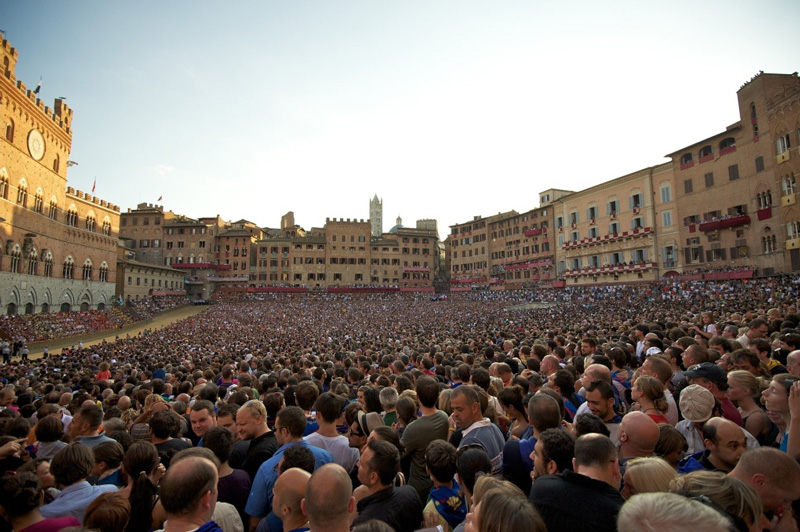
DAY 7 – PISA
Pisa is famous worldwide for its “Torre Pendente” (Leaning Tower), but its wonderful square, Piazza dei Miracoli, set over an ample greenfield, hosts three other whiter-than-white masterpieces of exquisite Medieval art: the Cathedral, the Baptristy and the “Camposanto” (Graveyard). They are so unique that their creation originated a new style, "Pisan Romanesque".
This area was chosen to construct the Duomo of Santa Maria Assunta strictly for its centrality; founded in 1064, it was intended to celebrate the grandeur of Pisa during the Marine Republic’s epoch of power. "The temple of marble white as the snow"; that’s how the structure is described on the gravestone of its architect, Buscheto di Giovanni Giudice. Consisting of five naves with its transept divided into three naves, it is surmounted by a splendid dome encircled by a loggia. The Duomo’s façade and exterior lateral sections feature elaborate decoration in marble (which can also be seen on its interior), mosaics, and bronze.
In front of the Cathedral stands the Baptistry, also in a particular version of the Romanesque style. Initiated in 1152 by Diotisalvi, the Baptistry was finally completed in the 14th century; Gothic elements were added then. Of cylindrical form and circled by arcades of columns, this structure in white marble even boasts impressive acoustics.
The Camposanto closes the northern end of the complex's piazza. This monumental cemetery, begun in 1278, is bordered by a marble fence and houses a cloister at its centre. Unfortunately, most frescoes that once coloured its walls were destroyed in a fire in 1944 during the battle for Pisa.
Ultimately, the true symbol of Pisa is the Campanile, the Leaning Tower, which completes the image of this city. Because of land sinkage beneath it, the Tower stands at a significant incline. Its construction started in 1173, but the Tower was not completed until the second half of the 1300s. In cylindrical form, the blind arcades of its lower part mutate into six floors of loggias, repeating motifs from the Duomo. Inside, a spiral staircase of 294 steps leads to the heights of one of the most famous towers in the world, where the lovely belfry and a spectacular view of the surrounding landscape await.
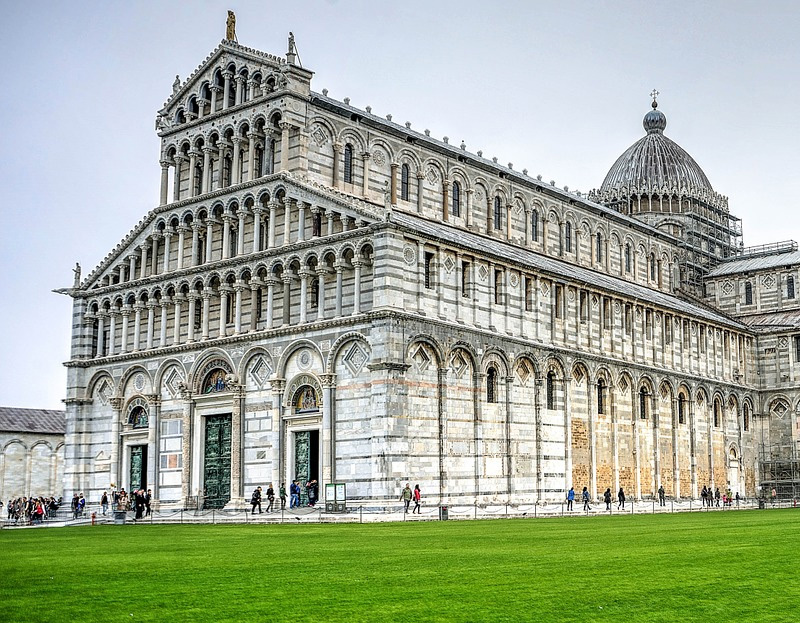
DAY 8 – CINQUE TERRE
Welcome to Cinque Terre, the beautiful villages on the Ligurian Sea included in the UNESCO World Heritage Site list. You will be stunned by the sea views and the contrasts between the sea and the cliffside. From Monterosso, you may reach the other fishing villages by train or on foot: Corniglia, Vernazza, Manarola and Riomaggiore. The vineyards, typical of this area, contribute to creating a unique landscape with dry-laid stone walls, winding paths, enchanting beaches between cliffs and clear waters!
The area is divided into five seaside and agricultural villages enriched with colours, simplicity and charm. The first stop in Cinque Terre is Monterosso, a well-known tourist destination embellished with elegant villas and a large beach. The old town centre, whose narrow alleys clamber up the hill, is home to the Gothic parish church of San Giovanni Battista and the 17th-century church of San Francesco, which is connected to the convent of the Capuchins.
Next is Vernazza and its charming marina, surrounded by the medieval little town and its characteristic little piazza, two Genoese lookout towers and the enchanting Gothic two-storey church dedicated to Santa Margherita d’Antiochia.
Just a short distance away is Corniglia, a village perched on a promontory ridge and connected to the beach by a stairway with 365 steps. The view of the village and the surrounding vineyards is just marvellous.
Then, Manarola, with its enormous black cliff overlooking the sea and its colourful houses, apparently coming out of the rock.
The last town in Cinque Terre, and the heart of the homonymous park, is Riomaggiore, a picturesque fishing village with tall, narrow, pastel-coloured houses and alternating light and darkness coming from the tight alleyways.
Do you like anchovies? They are a local speciality of Monterosso! Have you ever tried “Linguine al Pesto”, a sauce made from basil leaves, garlic, salt, olive oil, pine nuts and pecorino cheese? And what about Ligurian wines? Sciachetrà will seduce you!!
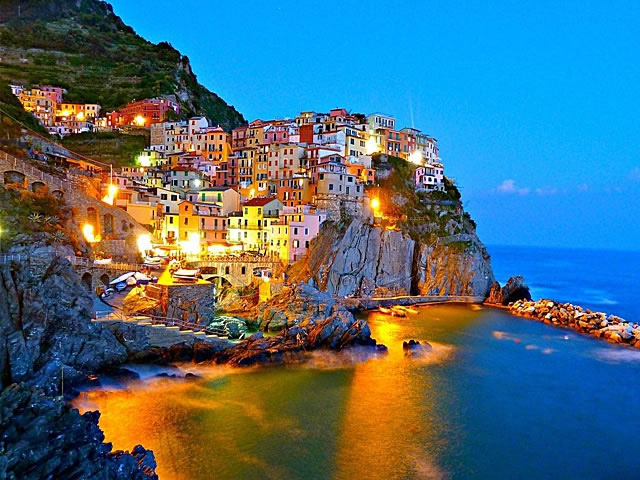
DAY 9 - PARMA
Your next destination is called “The Capital of Food”, and this is a well-deserved denomination, as Parma is known worldwide for its delicious food products.
Parma is known for its delicious food products. First, you will visit a Parmigiano Reggiano factory, where you will see cheese masters at work: an extraordinary way to get into the area's production culture and discover how a true gastronomic gem is made (more about Parmesan cheese in our BLOG).
Later on, visit a Parma ham factory, where you will learn the secrets of the most delicious ham, Prosciutto di Parma (to know more about raw ham in Italy, read the article in our the BLOG)
And finally, you may savour authentic Italian cuisine in a fun-filled cooking class led by a local “rezdora” (a female cook in the Parmesan language). Immerse yourself into the tradition of fresh Italian pasta and study the secrets of preparing pasta dough from scratch, using just flour and eggs. You will make your own “Tortelli d'erbetta” (Parma's most traditional pasta with a filling of ricotta cheese and chards) and delicious tagliatelle with tomato sauce – all local ingredients! Once your fantastic meal is ready, you will enjoy what you prepared, matched with a glass of local Lambrusco wine. A very tasty experience at the end of an unforgettable day!
The tour is over, but the memories of a fantastic journey will accompany you for a lifetime!
Arrivederci for another tour with VITOR, Visit Italy on the Road.
